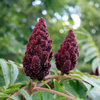Germinating seeds in Gel, Gelatin, Jello
crabs
13 years ago
Featured Answer
Comments (13)
origami_master
13 years agocrabs
13 years agoRelated Professionals
Windham Landscape Architects & Landscape Designers · Quincy Landscape Architects & Landscape Designers · Medford Landscape Contractors · Avocado Heights Landscape Contractors · Bell Gardens Landscape Contractors · Dallas Landscape Contractors · Estelle Landscape Contractors · Framingham Landscape Contractors · Hawaii Landscape Contractors · West Coon Rapids Landscape Contractors · Tucson Carpenters · Nashville Fence Contractors · New Haven Fence Contractors · Redondo Beach Fence Contractors · Silver Spring Fence Contractorsorigami_master
13 years agowwigderson
6 years agopoaky1
5 years agoalbert_135 39.17°N 119.76°W 4695ft.
5 years agolast modified: 5 years agoSeedsRUs.Etsy
5 years agopoaky1
5 years agoalbert_135 39.17°N 119.76°W 4695ft.
5 years agolast modified: 5 years agoVladimir (Zone 5b Massachusetts)
5 years agopoaky1
5 years agowwigderson
5 years agolast modified: 5 years ago
More Discussions







SeedsRUs.Etsy